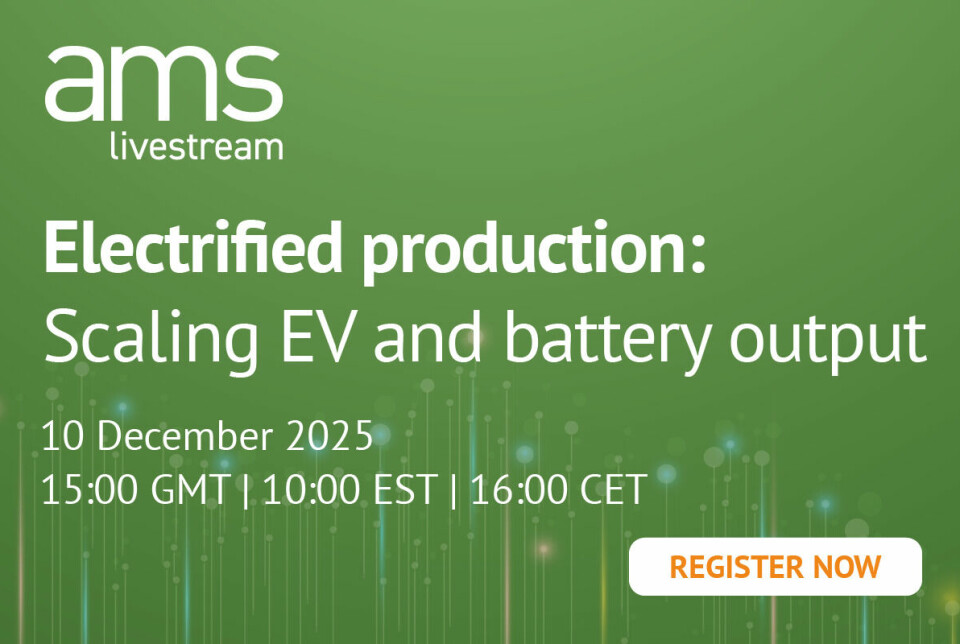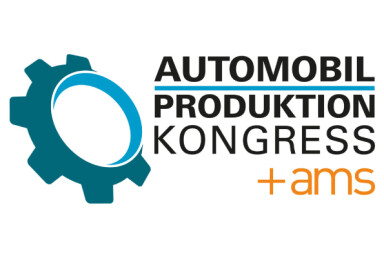VW's Zero Impact Factory

Inside Palmela: How VW transformed a 30-year-old factory for net zero
From geothermal networks to electrified paintshops and closed-loop metal recycling, Volkswagen's Palmela plant demonstrates how legacy factories can achieve significant decarbonisation—while confronting hard truths about polymer contamination and circularity limits.
Thirty kilometres south of Lisbon, beneath the assembly halls of Volkswagen's Autoeuropa plant, drilling rigs have penetrated 120 metres into Portuguese bedrock. This is not prospecting. It is production infrastructure. By March 2027, 336 boreholes will form an 80-kilometre underground network designed to replace natural gas combustion with geothermal energy, cutting heating and cooling energy consumption by 25% whilst eliminating local emissions entirely.
The installation represents one component of Volkswagen Group's Zero Impact Factory initiative, a framework now operating across all production sites for passenger cars, light commercial vehicles and components worldwide. At Volkswagen Autoeuropa in Palmela, the programme has already delivered a 65% reduction in environmental impact per vehicle since 2010. Management now targets 90% carbon reduction by 2030, with the geothermal system and a €300 million ($347 million) decarbonisation program where paintshop electrification forms the primary mechanisms.

"We see significant leverage for decarbonisation where we have direct control, at our production sites," says Tobias Bahr, Chief Environment Officer at Volkswagen Group. "The initiative Zero Impact Factory combines operational excellence, decarbonisation, environmental performance and local engagement within a framework for the global production sites of Volkswagen Group. We are driving a transformation with significant reduction of environmental impact at our production sites worldwide."
Electrifying the paintshop: How VW turned regulatory pressure into a strategic green leap
Paintshops consume approximately 60% of automotive plant energy and generate most volatile organic compound emissions. At Palmela, the facility, operational since 1993, processes 955 vehicles daily whilst consuming 0.53 megawatt hours per unit. The replacement infrastructure, scheduled for completion in 2027 with full electrification by 2029, will reduce painting operation carbon dioxide emissions by 40% through electrified ovens, primerless water-based coatings and high-efficiency application systems.
Margarida Pereira, Head of Product Management and Planning at Volkswagen Autoeuropa, traces the analytical process that preceded commitment. She says the discussion began in 2020 as regulatory pressure intensified, with new Best Available Techniques reference values demanding implementation by the end of 2024. But Palmela secured derogation until 2027, creating a decision window that coincided with unprecedented energy market volatility during the Covid period. Long-term contracts at stable prices vanished. "We evaluated the issue from two perspectives," she explains. "The technical capability to meet future regulatory requirements, and the volatility of energy costs."
The technical question resolved itself quickly. A new paint line was necessary. The strategic question proved more complex: whether to pursue conventional compliance or transformational decarbonisation. "It was technically possible to comply with the limits using conventional systems," says Pereira, "but by considering climatisation and broader environmental impacts, we saw a strong case to take the disruptive step of electrification."

Paintshop decisions create path dependencies lasting decades. And Volkswagen Autoeuropa was keenly aware of this. "Once you make this decision, you live with its consequences for the next 35 to 40 years," Pereira emphasises. Portugal's expanding renewable electricity capacity from wind and solar creates the opportunity for long-term price stability, making full electrification economically defensible despite higher initial capital requirements.
"From a broader perspective, these investments also make sense economically because they provide planning certainty," says Bahr. "Energy prices are volatile, but in Portugal we expect significant growth in renewable electricity, particularly from wind and solar power. That creates the opportunity to secure long-term stability."
Yet, Bahr points out, site-specific constraints shape pathway selection. "At other sites, however, a fully electrified option may not be feasible,” he says. “In those cases, we aim for dual-fuel solutions that can run on natural gas, biogas or hydrogen. This flexibility avoids locking us into one pathway and allows us to adapt as energy infrastructure develops."
Volkswagen Mexico's Puebla facility achieved paintshop electrification in January 2025 for $763 million, establishing a precedent within the group. Bahr highlights how the portfolio approach distributes risk whilst maintaining aggregate progress for Volkswagen. "That is why we balance these large, transformational projects with many smaller measures across the Group," he says. "Over the past years, we have implemented around 9,000 energy efficiency measures, saving about 3.5 million megawatt hours annually. This is substantial progress, and it reflects the dedication of the people at our sites."

Balancing global standards with local realities in sustainable production
The Zero Impact Factory framework organises environmental performance into eleven clusters, each linked to specific key performance indicators. Biodiversity forms one cluster, water management another. Yet standardising assessment across facilities operating under different regulatory regimes, with varying baseline infrastructure - and disparate documentation practices, requires considerable methodological accommodation.
Volkswagen, accordingly, has developed a balance between quantitative and qualitative KPIs to achieve its sustainability goals. What constitutes acceptable proof in Palmela may differ from Shanghai or Chattanooga.
"One challenge is the documentation of a large variety of different qualitative criteria across sites," says Bahr. "For instance, how evidence is recorded in Palmela may differ from other plants. We have embedded qualitative criteria eg, on biodiversity and environmental management into our annual environmental audit system. Our facilities undergo internal and external audits, though South American and Chinese operations use different bodies within the same framework, adding complexity to cross-site comparisons. However, the audit process itself adds complexity as it continues to evolve. "During audits, we add additional criteria each year," notes Bahr. "Internal auditors require concrete proof and compare findings across the plants they visit. For some criteria this is straightforward, something you can see directly. For others, providing evidence can be more complex."
Sometimes, recycling can actually require more energy than producing virgin material. If that is the case, we must carefully balance the trade-off
Another consideration, Pereira observes, is that plant personnel too often treat the framework mechanistically, approaching it as a bureaucratic obligation rather than a strategic development tool. "Too often colleagues still approach it as a tick-box exercise: provide evidence, tick the box, and move on,” she says. “But in essence, it is so much more than this.” Taking into consideration the Scopes and scales of the value chain, the criteria extend beyond facility perimeters to encompass suppliers and contractors working on site. "We face challenges in demonstrating that measures are implemented in a sustainable way,” says Pereira, “that they can be checked and re-checked, and that external partners are involved. Many criteria extend beyond the physical structure of the plant. These remain some of our biggest challenges."

The solution lies in flexible progression rather than rigid thresholds. Bahr says the program and its processes should act as an enabler for plants to develop. “That was, in fact, the main idea behind it.”
"We are not demanding that every plant achieves 100%. The aim is that each plant fulfils as many criteria as possible - in a sustainable way. The plants progress in a continuous improvement process showcasing substantial development over time."
Circularity and its contradictions: Purifying the material loop
Circularity is a core element of the Zero Impact Factory, and Volkswagen aims to apply it wherever possible "In engine construction, for instance," says Bahr, "aluminium is already recycled to a very large extent through internal loops. The same applies to certain polymers."
"Yet sometimes, recycling can actually require more energy than producing virgin material. If that is the case, we must carefully balance the trade-off," Bahr says. “In my experience, these processes are not usually at the core of our own operations, but rather something we need to work on with our suppliers to find viable solutions, but the energy penalty transfers rather than disappears.”
Another interesting insight is that circular supply availability presents a more fundamental constraint than energy balance. Bahr notes that because legislative mandates for recycled content are increasing across multiple industries, this state of affairs is potentially pushing up demand beyond available supply. "My greater concern is the risk of supply constraints," he says. "Legislation is increasingly mandating higher recycled content, which, of course I agree is the right direction of travel. But when applied across multiple industries, the demand for recyclates could outpace supply, driving up costs - even if the recycling process itself is less expensive."
Volkswagen Autoeuropa: Greening the field

Metal recycling demonstrates closed-loop feasibility
Pereira describes recent infrastructure investment designed to enable secondary material reintegration. The facility recently approved a baling press that collects scrap at line end, compressing it for shipping. "This equipment collects metal scrap at the end of the line and compresses it into bales for shipping and reuse," she explains. Until now, local furnaces consumed the material in low-value applications, but she says, European market scanning revealed higher-value potential. "There is a strong possibility that before the end of the decade, a supplier in northern Europe could purchase our baled scrap and return it to us as coils for production. That would allow us to completely close the loop for metal raw material." This would be a significant move in regional circularity and sustainable vehicle production.
"This is a good example of how, whenever we have the chance, we try to influence investment decisions with circularity in mind," Pereira adds. "Without a baling press, we would have far fewer options for reuse."
We now collect process data from all welding guns across our production lines. Our maintenance teams developed an algorithm that predicts misbehaviour, or their potential, in these guns. This allows preventive interventions before a quality problem ever materially occurs
Legacies of old: The pronounced problems in polymer circularity
Bahr says that recycling is usually a feasible option, when it comes to metals. “But with polymers,” he says, “there are two major issues. First, polymers age, and their quality can deteriorate to the point of becoming problematic for reuse. Secondly, and even more concerning is the presence of legacy substances. Essentially, older plastic parts often contain chemicals we are now trying to eliminate from society, such as persistent organic pollutants. When these materials are recycled, those substances can re-enter the value chain, ending up in reprocessed polymers."
Bahr notes that this creates both a technical and regulatory challenge that remains unresolved. "Finding a way to handle legacy substances in recycled polymers will be critical if we want to expand circularity across all material streams," he says. This contamination creates an involuntary reintroduction of banned substances into circular systems. Imagining this substance circularity, I say, “so it’s polluting the loop?”
"Precisely,” Bahr replies. “It is indeed, polluting the loop. Not intentionally, of course, but if we want to make use of that waste stream, we have to accept it will contain legacy substances - at least for the foreseeable future. Over time, they will inevitably dilute, but for now we need to recognise this uncompromising fact. Fifteen years ago, those substances served legitimate functions like flame retardancy or safety. Today, however, they are still needlessly present; an ungreen and unwelcome legacy of a bygone era.”
From ideation to production: Smart welding tools and industry cross-pollination
Palmela participates in the Sustainable and Low Cost Factories action field, which Pereira mentors. The initiative achieved nearly €1.2 million ($1.4 million) in savings from a €820,000 ($949,000) investment in 2021. Three years on, it has evolved into shared technical infrastructure for concept validation across Volkswagen Group core brands. But what is it? "The platform enables plants to propose concepts, share results, and ask whether anyone else is working on similar projects," Pereira explains. "It also allows plants to showcase successful implementations, whether disruptive innovations or simple measures that generate efficiency across key KPIs, so others can evaluate if they can adopt them, perhaps with adaptations."
Autoeuropa’s own water conservation methodology originated in drought-prone Martorell, Spain, where paintshop temperature zone optimisation proved highly effective. In fact, that method proved so effective, that it saved both water and energy, and has since been applied in Palmela and rolled out to other sites
There are several examples of creative efficiency projects that are happening at Autouropa. Even welding guns have been absorbed into smart systems at the site. Pereira outlines one example, of a project termed the Welding Online Monitoring system (or WOM), which collects process data from all welding guns for a minor investment that led to impressive efficiency gains. "With an investment of just €17,000 ($19,700) - a relatively small amount,” she says, “we now collect process data from all welding guns across our production lines. Our maintenance teams developed an algorithm that predicts misbehaviour, or their potential, in these guns. This allows preventive interventions before a quality problem ever materially occurs."
And of course, the timing of defect detection determines inspection scope and potential waste. "Without this system, you might only discover an issue at a quality checkpoint after 180 cars have already passed, meaning you must then check and potentially rework them all," she says. "With WOM, however, you can intervene early - often preventively - by adjusting welding parameters or replacing gun components before any defect appears in the production line itself."
Volkswagen’s factory gets a clean polish - thanks to dentistry
Another example, an impressive one that showcases the importance of knowledge-sharing across seemingly disparate industries, comes from the dental industry. (You read that correctly). Pereira outlines how Volkswagen Autoeuropa’s Tool and Die business unit personnel recently attended a technology trade fair where they observed a polishing methodology using liquid medium as applied in the dentistry.
The observation sparked recognition of potential applications to automotive toolmaking. "So we partnered with the company behind it, and tested the method on small metal parts, aiming to replace manual polishing of press tools, traditionally the most time-consuming and labour-intensive step in toolmaking," Pereira says. Progressive scale-up eventually reached car fender dimensions, validating commercial viability at the proof-of-concept stage.
Testing stations previously required operators to walk to return displays to line start, but mechanical rails now harness physics alone

Knowledge-sharing occurs at Volkswagen in many forms. Bahr says, “Autoeuropa’s own water conservation methodology originated in drought-prone Martorell, Spain, where paintshop temperature zone optimisation proved highly effective. In fact, that method proved so effective, that it saved both water and energy, and has since been applied in Palmela and rolled out to other sites."
Similarly, a Japanese-inspired (ergo: Toyota Production System-inspired), gravity-based materials handling philosophy termed Karakuri is highly-valued at Volkswagen. Pereira describes the principle enthusiastically. "We are also strong advocates of Karakuri, which are basically simple mechanical solutions that use zero additional energy.
"They rely purely on gravity to move parts or equipment along the line,” she says. “Testing stations previously required operators to walk to return displays to line start, but mechanical rails now harness physics alone. At the end of the process, the operator hangs the MFT (Multi-Function Terminal) on a small hook. Then with one click, the rail tilts just enough to set it in motion, and the device slides back on its own to the beginning of the line. It requires no superfluous energy, just gravity."
Evolution of measurement transitions and national sustainability stakes
Volkswagen Group initially measured environmental performance through UEPs, (Umweltentlastung Produktion or Environmental Relief in Production), a weighted average of five indicators per vehicle produced. But all things progress.
Overall, a 65% reduction in environmental impact per car has already been achieved by 2024. A 75% reduction is planned by 2030. With these advances, Palmela not only plays a key role within Volkswagen Group but also in the Portuguese industry decarbonisation journey
The original 2025 target of 45% reduction below 2010 levels was exceeded in 2024 at 48.5%. From 2025, the measurement system transitions from UEPs to the Impact Points methodology which will assess seven environmental aspects through standardised metrics, enabling absolute impact comparison rather than per-vehicle ratios whilst accounting for production volume changes.

Thomas Hegel Gunther, Plant Manager and Chairman of the Board of Management, positions achievement within national industrial transformation. "Overall, a 65% reduction in environmental impact per car has already been achieved by 2024. A 75% reduction is planned by 2030. With these advances, Palmela not only plays a key role within Volkswagen Group but also in the Portuguese industry decarbonisation journey."
The stakes extend beyond corporate performance. Volkswagen Autoeuropa contributes 1.6% to Portuguese GDP, accounting for 71% of national automotive production totalling 332,546 vehicles in 2024 across all manufacturers. Export performance reached €3.8 billion ($4.4 billion), with primary markets in Germany, Italy and the United Kingdom. The facility employs 4,842 personnel across 1.1 million sq.m of production space and 0.9 million sq.m of supplier park.
The Portuguese Environmental Fund and NextGenerationEU programme approved subsidies for decarbonisation investments in August 2025. Madalena Oliveira e Silva from the Portuguese Chamber of Foreign Trade outlined funding mechanisms and national strategy alignment at the media workshop. From 2027, the facility will manufacture the ID.Every1, Volkswagen's entry-level electric vehicle, alongside T-Roc production, with product transition aligning with electrification infrastructure deployment and paintshop modernisation completion.
Palmela demonstrates that legacy brownfield sites can achieve ambitious environmental targets through systematic investment, operational discipline and organisational learning (and knowledge-sharing) mechanisms. The 65% impact reduction since 2010 establishes baseline, whilst 90% carbon reduction by 2030 tests transformation limits within existing facility footprints. Success depends on continued capital availability, energy market evolution, regulatory stability and knowledge transfer effectiveness across Volkswagen's global production network. The geothermal boreholes beneath Lisbon stand for much more than local infrastructure investment. They symbolise the systematic approach to sustainable, industrial transformation - at scale.






